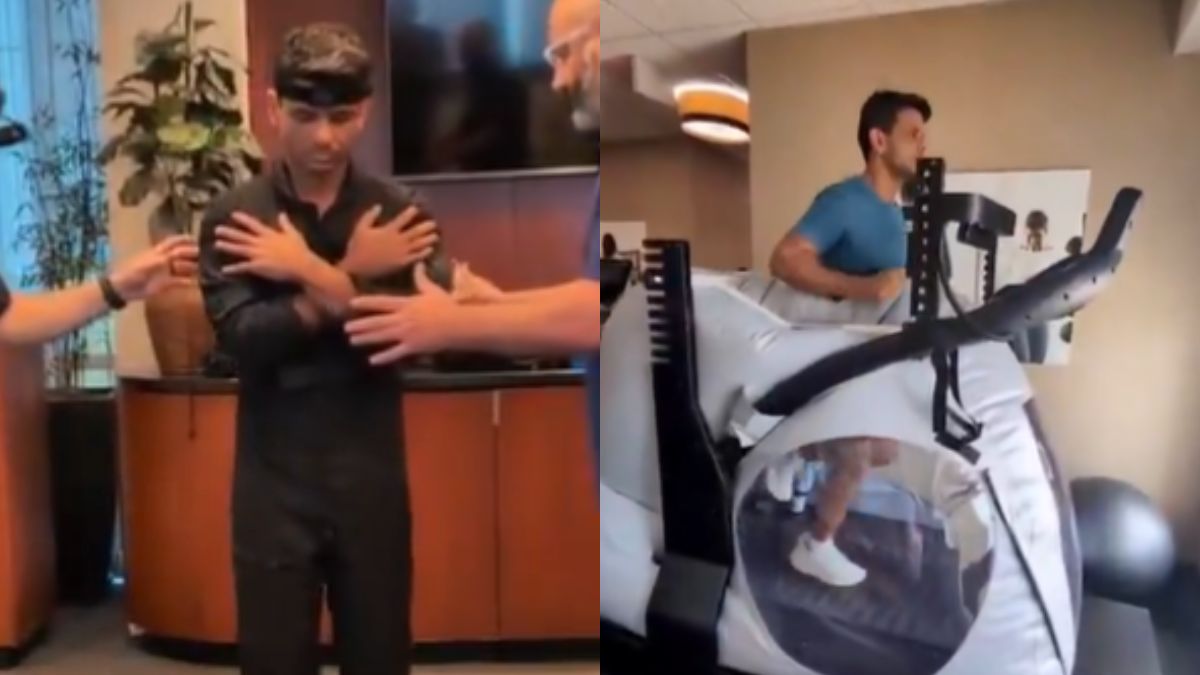Group Captain Shubhanshu Shukla, who came back from space on July 15 after spending almost three weeks aboard the International Space Station (ISS), is now going through recovery and getting used to life on Earth again.
Notably, he was one of four astronauts who flew to the ISS on June 25 aboard a SpaceX Dragon spacecraft as part of the Axiom-4 mission.
ALSO READ | Who is astronaut Shubhanshu Shukla’s wife, Kamna Shukla?
In a video posted by Shukla on Instagram, he could be seen learning to walk again, with two people helping him take slow and steady steps.
Earlier this year, Nasa astronauts Sunita Williams and Butch Wilmore were taken out of their SpaceX crew capsule on stretchers after returning from over nine months in space.
When astronauts return to Earth from space, they are unable to walk immediately after landing.
So, why does this happen?
Let’s find out:
Why Shubhanshu Shukla is learning to walk again
After spending close to 20 days in microgravity, Shubhanshu Shukla and his team landed safely on July 15.
On Tuesday, he posted a video on Instagram showing himself trying to walk again and readjust to gravity. In the clip, he is seen placing one foot in front of the other, with two people supporting him.
“I have received many messages wishing me a speedy recovery. I want to thank everyone and give a quick update,” he wrote.
Impact Shorts
More ShortsShukla explained that space travel affects the body in several ways, such as fluid movement, changes in heart rate, and reduced balance and muscle strength.
“These are adaptations to the new environment,” he said, adding, “Once the body gets used to this and we return to gravity, these adjustments happen once again.”
He mentioned that while the recovery period varies for each astronaut, the body starts adapting soon after landing.
“I was surprised to observe the pace with which our body can adjust to new settings,” he said.
During their time on the International Space Station, Shukla and his crewmates carried out more than 60 scientific experiments and outreach activities.
Shukla is the second Indian to travel to space, after Wing Commander Rakesh Sharma, who made the journey in 1984.
Why astronauts have to learn to walk again after space travel
When astronauts return from space, they are often unable to walk on their own right away. Many need support to stand or move properly.
This happens because of temporary changes that take place in the body during space travel.
John DeWitt, director of applied sports science at Rice University in Texas and a former senior scientist at Nasa’s Johnson Space Center, told Live Science that just like someone might feel sick on a roller coaster or a rough boat ride, astronauts can feel dizzy and nauseous when they come back to Earth.
This is one reason why astronauts are usually moved out of the spacecraft on stretchers after landing, as a safety step.
The sensation occurs because our bodies rely on gravity to function normally. But on the International Space Station, astronauts experience weightlessness as the station constantly falls towards Earth. Their bodies slowly adjust to this changed setting.
Recently, Sunita Williams and Butch Wilmore were carried out on stretchers after their return from space.
Another reason astronauts find walking hard is due to fluid shifts.
In space, fluids move towards the upper body. When astronauts return, they may feel faint or dizzy from a sudden drop in blood pressure while standing, as their body needs time to relearn how to manage blood flow under gravity.
Balance is also affected. The part of the inner ear that helps with movement and balance adapts to zero gravity.
Once back on Earth, the brain takes time to adjust and process signals correctly. Movements that were easy in space now feel clumsy, as the brain relearns how to move with gravity, The Times of India reported.
How do the astronauts recover?
To recover from the effects of microgravity and adjust to Earth’s gravity, astronauts go through careful rehabilitation.
They take part in physical therapy sessions designed to rebuild muscle strength and bone density lost during their time in space. Balance training is also provided to help the vestibular system readjust to Earth’s environment.
As space travel has a major impact on cardiovascular health, astronauts slowly resume physical activity. This helps their heart and circulation return to normal levels.


)

)
)
)
)
)
)
)
)



